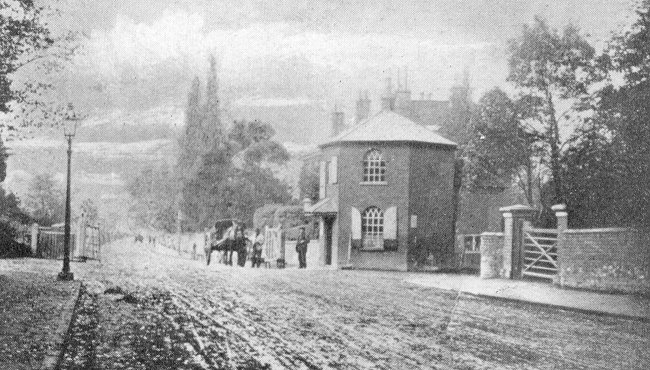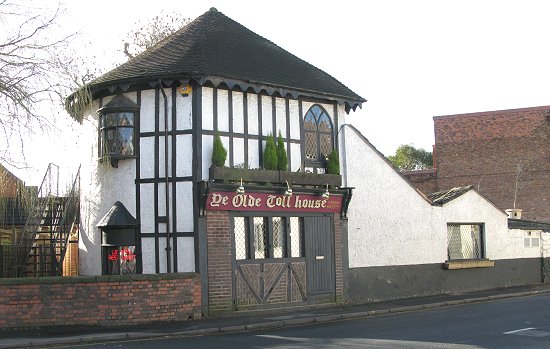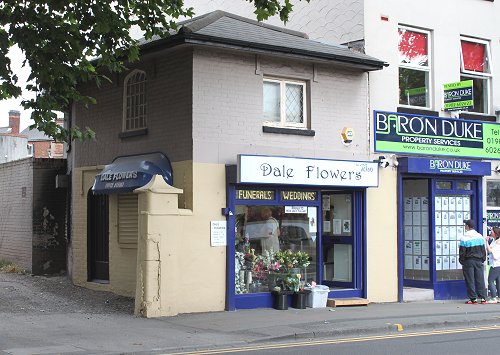|
Early road improvements
In the early part of the eighteenth
century, most roads were in a terrible state. Many were
simply rutted dirt tracks which were impassable in periods of wet
weather, or during periods of snow and ice. Journeys could
be hazardous, even on major routes.
Road improvements began with the
setting-up of turnpike trusts which were bodies set up by
individual acts of Parliament, with powers to collect road
tolls for maintaining the principal roads in the country.
The first turnpike trust was created in 1706, and by the
1830s over a thousand trusts administered about 30,000
miles of roads in England and Wales, under the terms of some
4,000 separate Acts.
Turnpikes consisted of a gate or
barrier, setup to collect tolls. The trustees were
authorised to collect tolls for 21 years in return for
repairing a particular road. Tolls were paid by users once a
day for the whole length of the road, and regular users
could pay quarterly. The law stated that anyone riding
within a certain distance of a toll gate had to pay a toll,
whether they passed through or not.
|

The old toll house on Penn Road. From the
Wolverhampton Journal.
|
One of the most important turnpike
roads to pass through the Black Country was Thomas Telford’s
Holyhead Road, later known as the A5. The route from London
to Holyhead was improved because of the Act of Union between
England and Ireland, passed in 1801. Due to the Act, the
amount of traffic between Dublin and Holyhead increased
dramatically, including the one hundred Irish MPs who had
the right to attend the Parliament at Westminster. The route
from Holyhead to London was tortuous, with many bad roads
and long delays, which led to frequent complaints about the
appalling state of the road, and the long journey time.
A parliamentary committee set up to
organise the necessary improvements for the Holyhead Road,
appointed Thomas Telford as the consulting engineer. Telford
surveyed the route and presented his plans to Parliament in
1811. It took another four years for the funds to be
authorised, and thirteen years to build, at a cost of more
than £500,000. He began by organising the route from
Holyhead to Shrewsbury, including the building of the Menai
Suspension Bridge. Work on this part of the road began in
1815 and took five years to complete. In 1820 work began on
the remaining part of the route, which was completed in
1828. The work on the road was undertaken by 24 independent
turnpike trusts.
The new road reduced the journey time
of the London mail coach from 45 hours to 27 hours, allowing
improvements in speed from a maximum of five to six miles an
hour, to nine to ten miles an hour.
The section through Wednesbury was
completed in about 1826 and placed under the Bilston
Turnpike Trust who built a toll house at the top of
Dangerfield Lane, Wednesbury. Two other turnpikes were setup
in the town, one in Lower High Street and the other in Upper
High Street near the High Bullen.
When Telford examined the section
between Tettenhall and Wolverhampton he decided to
completely avoid the Tettenhall ridge by diverting the road
through Aldersley to the Wergs. The chairman of the
Wolverhampton turnpike trust rejected Telford's plan because
the Aldersley area was waterlogged, and wouldn't provide a
proper surface for the road. Telford responded by suggesting
that a tunnel should be built through the ridge to Upper
Green, but this was also rejected by the Wolverhampton
turnpike trust, who finally decided to blast the cutting
through The Rock, and build the new canal bridge, and the
embankment. After many difficulties, the work was finally
competed in 1823.
For the first time vehicles could
easily pass between Newbridge and Upper Green, avoiding the
fearsome gradient at Old Hill. It had been an expensive
undertaking, which greatly increased the tolls that were
payable on the road. Initially tolls were collected at
Chapel Ash, but this was abandoned in favour of two gates,
one at Newbridge, and another at Compton. The new road, and
the improved access to the upper part of Tettenhall, allowed
the village to greatly expand, and made it an attractive
place to live for the well to do.
Lord Dudley supplied capital for many
of the turnpike trusts setup in the Black Country. By 1779
he had loaned around £6,200 to local trusts including the
Stourbridge to Dudley trust, the Wolverhampton to
Birmingham trust, the Dudley to Wednesbury trust, and the Wombourne to Bilston trust.
|

The toll house built for the Walsall Road
Turnpike Trust, set up in 1750, now a restaurant.
|
In 1784, Mr. Fletcher of the recently
built George Hotel in Walsall, obtained an Act of Parliament
for the building of the road from Walsall to Stafford, and
the widening of the Birmingham Road as far as Hampstead
Bridge. In 1788 a turnpike Act provided for the repair and
improvement of the roads to Wolverhampton, Sutton Coldfield,
and Hampstead Bridge. It also allowed the reconstruction of
the Birmingham Road.
Another turnpike Act, Passed in 1793
allowed the road from Churchbridge to Stafford to be
improved. This reduced the journey to the north by four
miles and greatly improved the town’s link with Chester,
Liverpool, and Manchester. It also encouraged traffic
heading north from Birmingham to pass through the town,
increasing the prosperity of the local inns and shops.
In Willenhall the traffic from Walsall
passed through the narrow streets in the town centre, and
along Wolverhampton Street. The decision was taken to build
a road to by-pass the town centre, to provide a faster and
more direct route through the town. This was achieved around
1818 by the building of New Road, a turnpike road which
links the main Walsall Road to the western end of
Wolverhampton Street. The old toll house is now a shop at 9
New Road.
In nearby Darlaston, the road to
Wednesbury from the Bull Stake, called Darlaston Road was
built under the terms of a 1787 Turnpike Act, and in 1776 a
turnpike trust was setup to raise money to build a new road
through Moxley (High Street) to join the Wednesbury Road at
its junction with Dangerfield Lane.
All of the main roads in Wolverhampton
were improved and administered by turnpike trusts. The Penn
Road became a well-maintained thoroughfare thanks to the
efforts of the turnpike trust, set up in 1761. The toll
house stood on the corner of Coalway Lane, one of six
between Wolverhampton and Stourbridge. Others were at Himley,
Kingswinford, Bromley Lane, Wordsley, and Coalbournbrook
near Stourbridge.
The road to Stafford was turnpiked by
1770, running through Penkridge and Dunstan to Green Gate on
the south side of Stafford. There were three tollgates on
the Wolverhampton part of the road. The first was at the bottom of Lower Stafford Street,
followed by another known as Oxley Gate, near Oxley Manor
lodge, and another at the bottom of Bushbury Lane. In 1824 the tollgates at Chapel Ash and
Bilston Street each collected over £1,200. |
|

The old New Road toll house in
Willenhall. |
Other toll gates were at the Fighting
Cocks, where there was a gate for Sedgley, and one for
Bilston, another was at the top of Ettingshall Lane, and
another stood on the Willenhall Road stood near the junction
of Lower Horseley Fields and Lower Walsall Street. On
Cannock Road, a toll house stood on the corner of Bushbury
Road, and on Compton Road, toll gates were at the
Wolverhampton end of the road, at Horsehill, and at the bottom
of Richmond Road. There was also a toll bar at the bottom of
the hill at Compton leading to Finchfield. |
| The improved roads had a great impact
on traffic, which soon increased throughout the local towns,
and encouraged the development of town centres, and local
industries. |
 |
|
 |
Return to the
beginning |
|
Proceed to
Coaches |
|